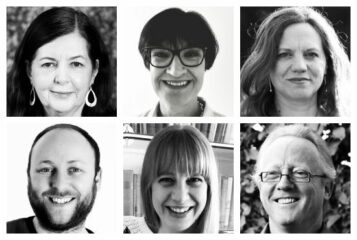Bringing sperm and egg donors, and their families, into conversations around donor conception is an important next step in supporting individuals, organisations and policymakers involved in conception using donated gametes.
The Curious Connections project based at the Morgan Centre, University of Manchester is the first to explore the impact of donating egg or sperm on donors' families and relationships, and our data provides a fascinating perspective on donor conception (see our animation for key insights).
We often think of donors as… just that: donors. But donors are also parents, partners, children, aunts and uncles and donation can also affect these relationships. Our research showed that a donor's own partner, parents, siblings and children can feel a connection with the donor-conceived child.
Let's look in brief at how donors' partners, children and siblings felt about donation.
Partners
Partners were the only family members who were usually told about the donation in advance. Both donors, and counsellors working with donors in clinics, thought that partners had a right to know about the donation in advance and they were the only member of the donor's family who were perceived to have a right to veto the donation.
Children
Donors thought that it was important to tell their children they had donated their egg or sperm because doing so created genetic half-siblings for them. And children were often interested in this connection themselves. It could be difficult for donors to think through the impact that donation would have on their children years into the future. (See our video 'Talking to your children about being a sperm or egg donor').
Let's use one of our interviewees, Annie (not her real name), as an example. Annie donated her eggs to a recipient she did not know. Before donating, she went to counselling sessions at the clinic, and thought really carefully about what being a donor would mean for her, and about her responsibilities to any children born from her eggs. She strongly supported the idea that children could contact her when they reached the age of 18.
Annie didn't have any children herself when she donated eggs. When she later decided to have a child and baby Ryan came along, she realised that the donation had created connections for him that she just hadn't foreseen. Ryan and her donor-conceived child both had half her genes, but only the donor-conceived child could decide to make contact with Annie and Ryan. Annie knew that she wouldn't be able to initiate contact, but once Ryan was born she realised that he also did not have this option.
Under current donor conception policy, children like Ryan do not have any rights to make contact with their genetic half siblings. This is in contrast to donor-conceived children who can choose to initiate contact both with their donor, and through them, the donor's children, and any other donor-conceived children born using their donor's egg or sperm, by mutual consent. Of course, the availability of home DNA test kits presents significant challenges to current policy frameworks.
Parents, brothers and sisters
Beyond partners and children, donors decided which family members to tell about their donation on a case-by-case basis, depending on who they felt close to and what reaction they might have.
We found that most of the family members we interviewed had a positive reaction to the news of the donation (though donors tended not to tell relatives who they thought might not support their decision). But family members didn't always react how the donors expected.
Parents and siblings could be excited, interested, deeply curious, or ambivalent, doubtful or disapproving. Perhaps the most common unexpected reaction to the news was when family members showed a personal interest in the connection created by the donation.
Donors often take on a combined responsibility to be available to the donor-conceived child, and to know their place and not intrude, so they often felt that they needed to make sure that their family members behaved in the same way. Cases where disagreements over donation had led to real problems were rare, but could be deeply felt. In families where it raised tensions, most managed these by avoiding talking about the subject and, at least outwardly, going along with the donor's wishes.
As families using donor conception increase in number, we believe that more support and resources need to be made available not just to donors, but also to their family.
For more about our research and resources see our webpage. These resources explore how donation affects the lives and relationship of donors and their families, connections between donors and recipients, experiences of 'known' donation, being a 'good' donor, and even a collection of short stories based on experiences of egg-share donation.







Leave a Reply
You must be logged in to post a comment.